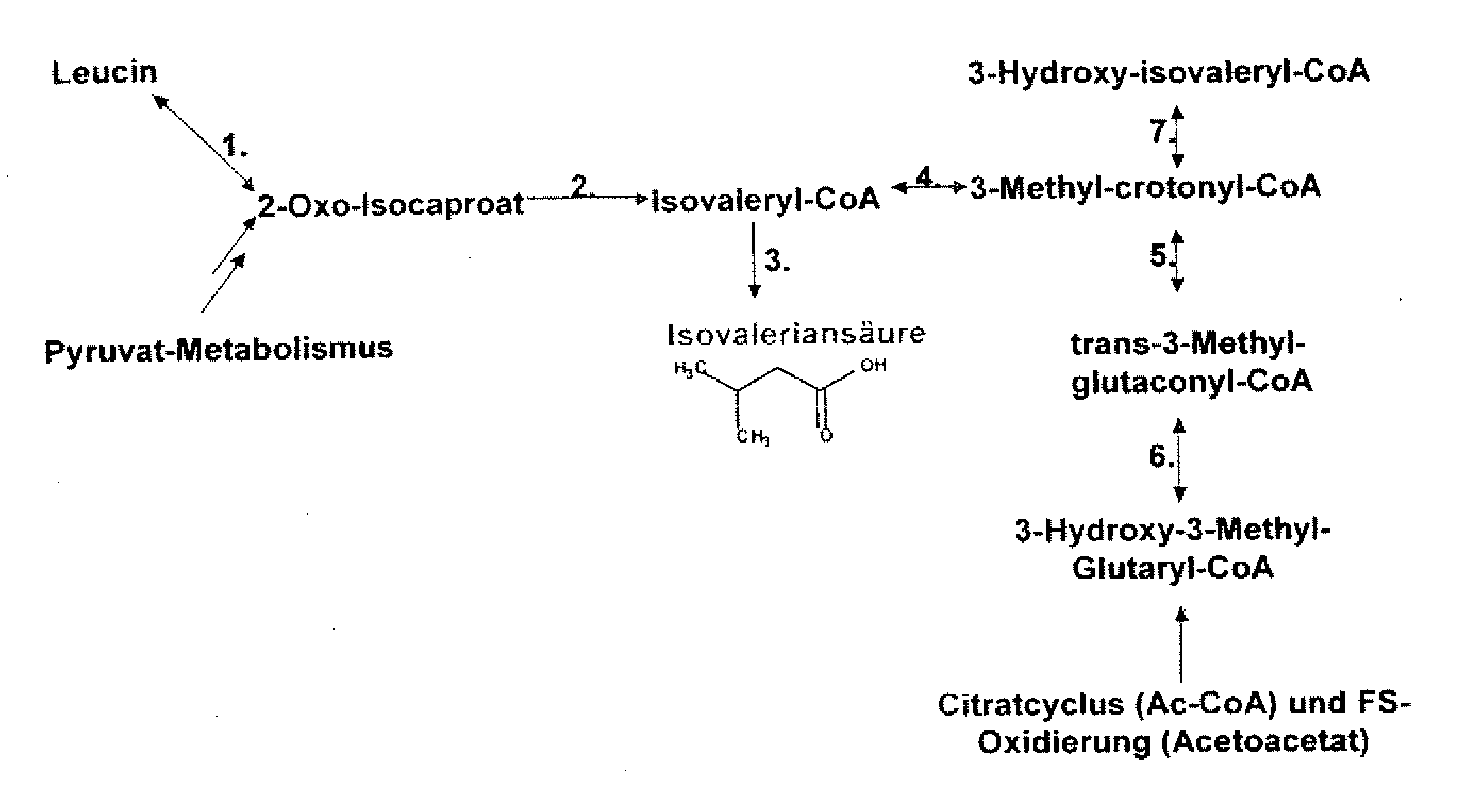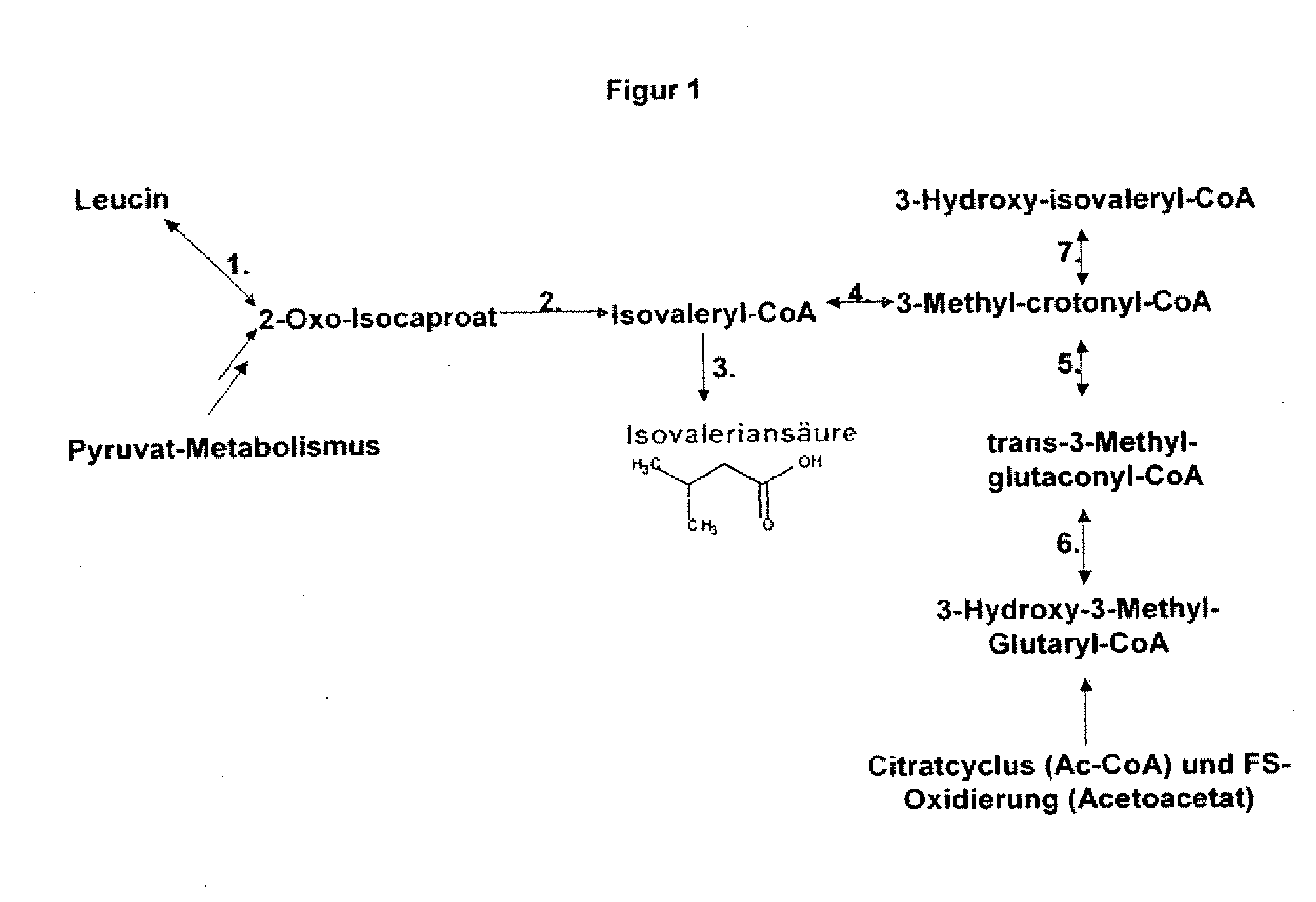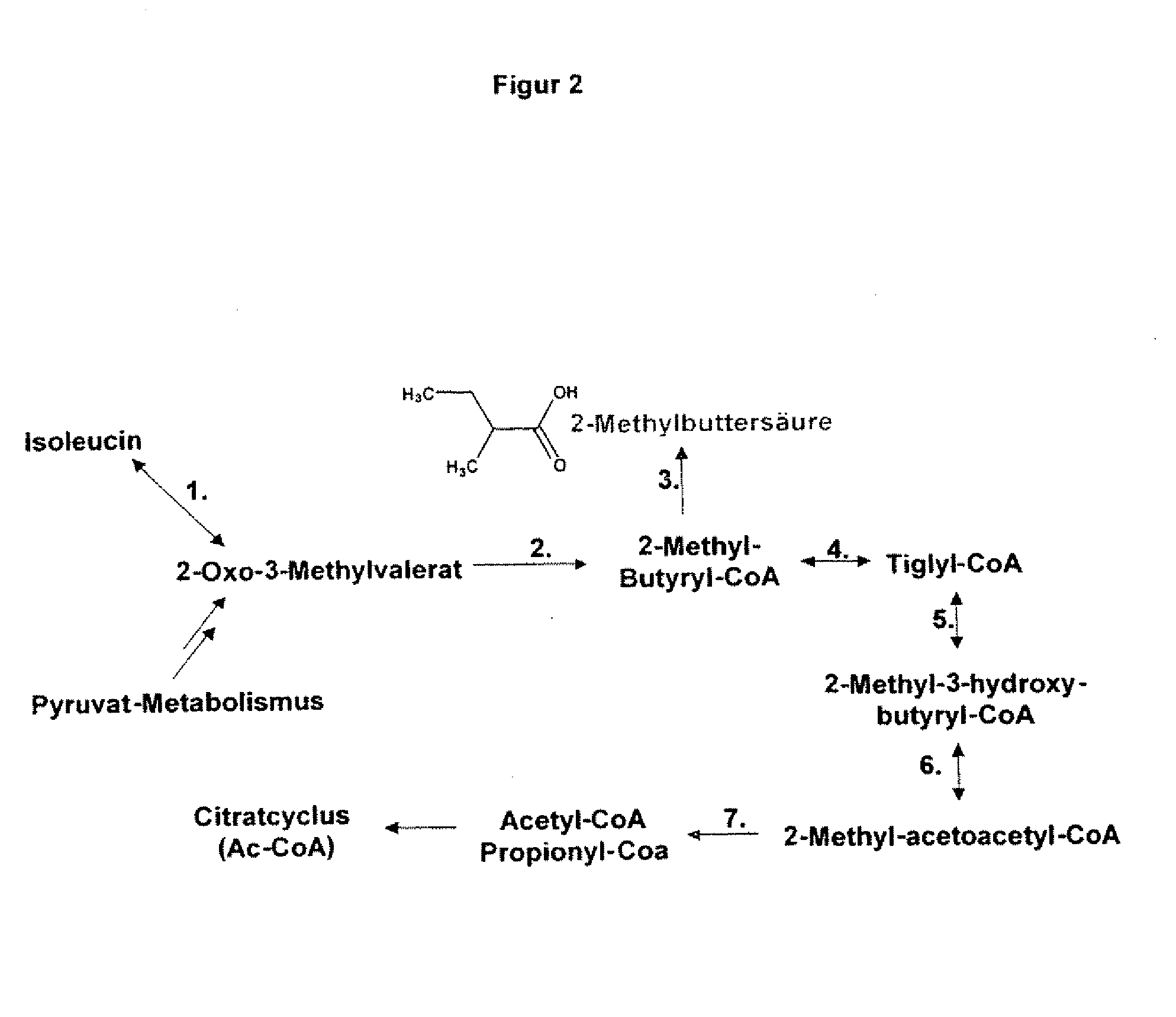Gene products of bacillus licheniformis which form odorous substances and improved biotechnological production methods based thereon
a technology of licheniformis and licheniforme, which is applied in the direction of lyase, transferase, bulk chemical production, etc., can solve the problems of affecting the quality of the product, causing harm to the concomitant odorous and/or poisonous substances, and unwanted side effects, so as to reduce the formation of unpleasant odors
- Summary
- Abstract
- Description
- Claims
- Application Information
AI Technical Summary
Benefits of technology
Problems solved by technology
Method used
Image
Examples
example 1
Identification of the Nucleic Acids Shown in SEQ ID NO. 1, 3, 5, 7, 9, 11, 13, 15, 17, 19, 21, 23, 25, 27, 29, 31, 33, 35, 37, 39, 41, 43, 45, 47 and 49 from B. licheniformis DSM 13
[0485] The genomic DNA was prepared by standard methods from the strain B. licheniformis DSM 13, which is available to anyone from the Deutsche Sammiung von Mikroorganismen und Zelikulturen GmbH, Mascheroder Weg 1b, 38124 Brunswick (http: / / www.dsmz.de), mechanically fractionated and fractionated by electrophoresis in a 0.8% agarose gel. For a shotgun cloning of the smaller fragments, the fragments 2 to 2.5 kb in size were eluted from the agarose gel, dephosphorylated and ligated as blunt-ended fragments into the Smal restriction cleavage site of the vector pTZ19R-Cm. This is a derivative which confers chloramphenicol resistance of the plasmid pTZ19R which is obtainable from Fermentas (St. Leon-Rot). A gene library of the smaller fragments was obtained thereby. As second shotgun cloning, the genomic frag...
example 2
Sequence Homologies
[0488] After ascertaining the DNA and amino acid sequences as in Example 1, in each case the most similar homologs disclosed to date were ascertained by searching the databases GenBank (National Center for Biotechnology Information NCBI, National Institute of Health, Bethesda, Md., USA), EMBL European Bioinformatics Institute (EBI) in Cambridge, Great Britain (http: / / www.ebi.ac.uk), Swiss-Prot (Geneva Bioinformatics (GeneBio) S.A., Geneva, Switzerland; http: / / www.genebio.com / sprot.html) and PIR (Protein Information Resource, National Biomedical Research Foundation, Georgetown University Medical Center, Washington, D.C., USA; http: / / www.pir.georgetown.edu). The nr (nonredundant) option was chosen in this connection.
[0489] The ascertained DNA and amino acid sequences were compared with one another via alignments in order to determine the degree of homology; the computer program used for this was Vector NTI® Suite Version 7, which is obtainable from Informax Inc.,...
example 3
Functional Inactivation of One or More of the Genes Shown in SEQ ID NO. 1, 3, 5, 7, 9, 11, 13, 15, 17, 19, 21, 23, 25, 27, 29, 31, 33, 35, 37, 39, 41, 43, 45, 47 and 49 in B. licheniformis
Principle of the Preparation of a Deletion Vector
[0491] Each of these genes can be functionally inactivated for example by means of a so-called deletion vector. This procedure is described per se for example by J. Vehmaanperä et al. (1991) in the publication “Genetic manipulation of Bacillus amyloliquefaciens”; J. Biotechnol., volume 19, pages 221-240.
[0492] A suitable vector for this is pE194 which is characterized in the publication “Replication and incompatibility properties of plasmid pE194 in Bacillus subtilis” by T.J. Gryczan et al. (1982), J. Bacteriol., volume 152, pages 722-735. The advantage of this deletion vector is that it possesses a temperature-dependent origin of replication. pE194 is able to replicate in the transformed cell at 33° C., so that initial selection for successful ...
PUM
| Property | Measurement | Unit |
|---|---|---|
| temperature | aaaaa | aaaaa |
| temperature | aaaaa | aaaaa |
| molecular weight | aaaaa | aaaaa |
Abstract
Description
Claims
Application Information
 Login to View More
Login to View More - R&D
- Intellectual Property
- Life Sciences
- Materials
- Tech Scout
- Unparalleled Data Quality
- Higher Quality Content
- 60% Fewer Hallucinations
Browse by: Latest US Patents, China's latest patents, Technical Efficacy Thesaurus, Application Domain, Technology Topic, Popular Technical Reports.
© 2025 PatSnap. All rights reserved.Legal|Privacy policy|Modern Slavery Act Transparency Statement|Sitemap|About US| Contact US: help@patsnap.com



